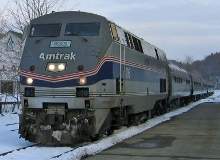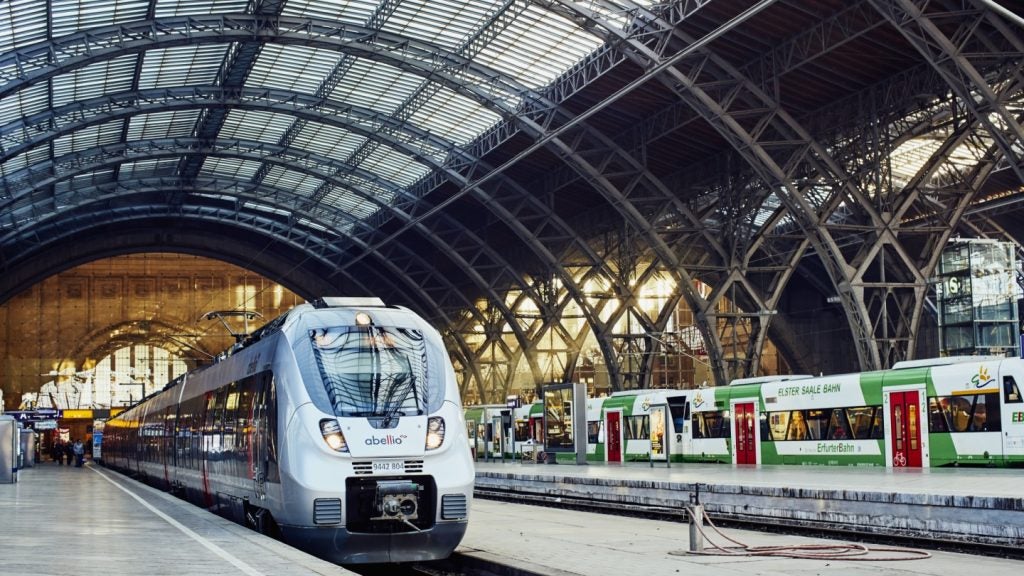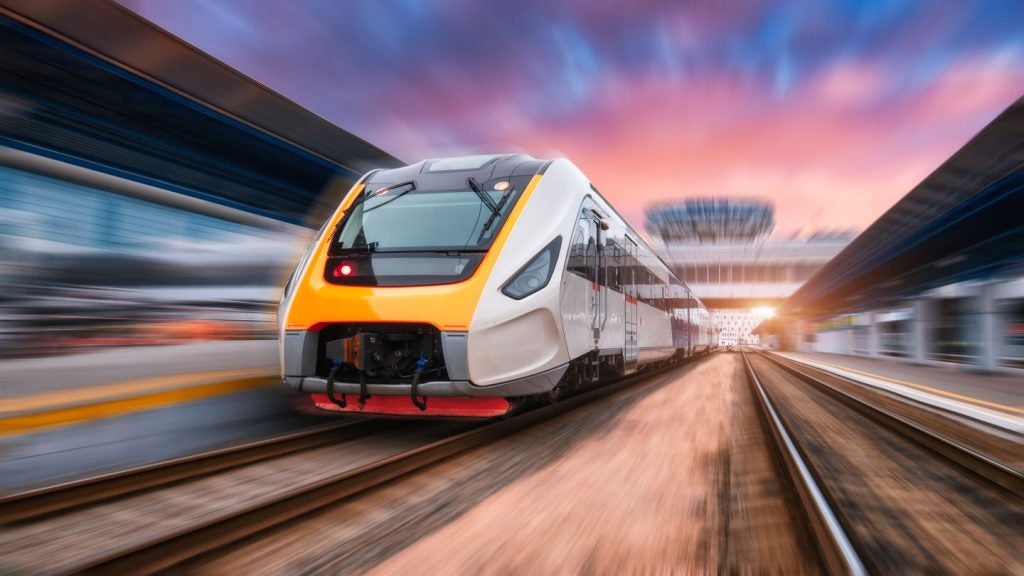
World’s Longest Railway NetworksWorld’s Longest Railway Networks
The United States has the world’s longest railway network, followed by China and India. Railway-technology.com profiles the 10 largest railway networks in the world based on total operating length.
United States: 250,000km
The US rail network, with an operating route length over 250,000km, is the biggest in the world. Freight lines constitute about 80% of the country’s total rail network, while the total passenger network spans about 35,000km.
The US freight rail network consists of 538 railroads (seven Class I railroads, 21 regional railroads, and 510 local railroads) operated by private organisations. Union Pacific Railroad and BNSF Railway are among the largest freight railroad networks in the world. The national passenger rail network Amtrak comprises of more than 30 train routes connecting 500 destinations across 46 American states.
A plan is in place to build a 27,000km national high speed rail system in four phases by 2030. Construction of the California high-speed rail, the country’s first high-speed rail project, was well underway by the beginning of 2014. Three more high-speed projects including the Midwest high-speed rail line connecting Chicago with Indianapolis or St. Louis, Texas high-speed rail, and the Northeast High-Speed Corridor are under development.
China: 100,000km
China’s rail network, with a route length of over 100,000km, ranks as the second biggest rail network in the world. The extensive network, operated by state-owned China Railway Corporation, carried 2.08 billion passengers (the second highest after Indian Railways) and 3.22 billion tonnes of freight (the second highest after the US railway network) in 2013.
Rail is the principal mode of transport in China. The country’s rail network consists of over 90,000km of conventional rail routes and approximately 10,000km of high-speed lines. The total rail network of the country is targeted to exceed 270,000km by 2050.
How well do you really know your competitors?
Access the most comprehensive Company Profiles on the market, powered by GlobalData. Save hours of research. Gain competitive edge.

Thank you!
Your download email will arrive shortly
Not ready to buy yet? Download a free sample
We are confident about the unique quality of our Company Profiles. However, we want you to make the most beneficial decision for your business, so we offer a free sample that you can download by submitting the below form
By GlobalDataThe rapid expansion of China’s high-speed rail network in recent years makes it by far the largest in the world. The 2,298km Beijing – Guangzhou high speed line is the world’s longest high-speed railway line. The total length of China’s high-speed rail network is projected to reach 50,000km by 2020.
Russia: 85,500km
Russia’s whole network, operated by state-owned monopoly Russian Railways (RZD), runs for over 85,500km. In 2013, the network carried 1.08 billion passengers and 1.2 billion tonnes of freight – the third highest freight volume after the US and China.
The Russian railway network incorporates12 main lines, many of which provide direct connections to the European and Asian national railway systems such as Finland, France, Germany, Poland, China, Mongolia and North Korea. The Trans-Siberian Railway (the Moscow-Vladivostok line), spanning a length of 9,289km, is the longest and one of the busiest railway lines in the world.
RZD introduced the Sapsan high-speed rail service between St. Petersburg and Moscow in 2009, but it has not proved successful due to sharing existing lines with low-speed train operations. A dedicated high-speed corridor between the two cities has been planned with a proposed investment of $35bn. RZD expects to have 2,500km of high-speed rail between Moscow and Kiev, Minsk and Kursk by 2015.
India: 65,000km
The Indian nationwide rail network, the fourth longest in the world, is owned and operated by state-owned Indian Railways and includes an operating route length of more than 65,000km. The network carried about eight billion passengers (the highest in the world) and 1.01 million tonnes of freight (fourth highest in the world) in 2013.
The Indian railway network is divided into 17 zones and operates more than 19,000 trains per day, including 12,000 passenger trains and 7,000 freight trains. The national railway operator plans to add 4,000km of new lines by 2017, as well as significant gauge conversion, doubling and electrification of its existing aging lines. It also plans to add 3,338km of exclusive freight network by 2017 with the implementation of Eastern & Western Dedicated Freight Corridors (DFC), two of the six identified dedicated freight corridors in India.
Six high-speed corridors have also been identified for implementation in the country. The 534km Mumbai-Ahmedabad high-speed link is being advanced as a pilot project with an estimated investment of $9.65bn.
Canada: 48,000km
Canada’s 48,000km of rail lines makes its national network the fifth longest in the world. Canadian National Railway (CN) and Canadian Pacific Railway (CPR) are the two major freight rail networks operating in the country, while Via Rail operates the 12,500km intercity passenger rail service. Algoma Central Railway and Ontario Northland Railway are among the other smaller railways providing passenger services to certain rural areas in the country.
Three Canadian cities – Montreal, Toronto and Vancouver – have extensive commuter train systems. In addition, the Rocky Mountaineer and Royal Canadian Pacific offer luxury rail tours to view the scenic beauty of certain mountainous areas in the country.
Canada, however, does not have a single high-speed line on its railway network. Many high-speed lines such as Toronto-Montreal, Calgary-Edmonton and Montreal-Boston have been proposed, but none of these have progressed beyond preliminary studies as of January 2014.
Germany: 41,000km
State-owned Deutshe Bahn dominates Germany’s 41,000km railway network, accounting for about 80% of the total freight traffic and 99% of the long-distance passenger traffic.
More than 150 private railway companies apart from Deutshe Bahn operate on the network, providing regional passenger and freight services. The S-Bahn serves major suburban areas, while the Hamburg Cologne Express (HKX) is the major long-distance passenger operator after Deutshe Bahn.
The German railway network had more than 1,300km of high-speed railway track operational as of mid-2013 and more than 400km of new high-speed line under construction. Deutshe Bahn opened high-speed services, under the name InterCity Express (ICE), for the first time in 1991. The high-speed network, operated at speeds up to 320km/h, now connects major German cities and neighbouring countries such as France, Switzerland, Belgium, the Netherlands and Austria.
Australia: 40,000km
The Australian railway network is the world’s seventh longest at more than 40,000km. Most of the railway network infrastructure is owned and maintained by the Australian government either at the federal or state level. The majority of the trains on the network are, however, operated by private companies.
Aurizon (formerly QR National), Genesee and Wyoming Australia, and Pacific National are among the major freight operators on the network. Great Southern Railway, NSW TrainLink and Queensland Rail are the leading long-distance passenger rail operators. Metro Trains Melbourne, Sydney Trains, V/Line and Adelaide Metro operate commuter passenger services in major suburban areas. In addition, a number of private mining railways operate in the country.
The Australian railway network does not have a high-speed line yet. A high-speed rail network connecting Brisbane, Sydney, Canberra and Melbourne is proposed to be built with an estimated capital cost of $114bn, but the first phase of the 1,748km high-speed network will not be realised before 2035.
Argentina: 36,000km
Argentina’s current rail network spanning over 36,000km in length ranks the eighth largest in the world. Argentina used to have about 47,000km of rail network at the end of the Second World War, mostly operated by British and French-owned railway companies. But the decline of profits and the rise of highway construction in the subsequent decades reduced the network to the 36,000km of line that exists today. The railway companies operating on the network were nationalised in 1948 with the creation of the state railroad corporation Ferrocarriles Argentinos.
The Argentinean railway was privatised between 1992 and 1995 with the grant of concessions to different private companies for operating six divisions of the formerly state-owned rail network. Cities such as Buenos Aires, Resistencia and Mendoza offer extensive suburban passenger services, as well as the long distance passenger lines in the country.
The much talked-about Argentine high-speed railway is not a reality yet. An announcement was made in 2006 to develop a 310km high-speed line between Buenos Aires and Rosario. The project was, however, not implemented as of 2013. A second high-speed line stretching 400km between Rosario and Cordoba has also been proposed.
France: 29,000km
At 29,000km, the French railway network is the second biggest in Europe and the ninth biggest in the world. The French railway network is predominantly passenger-centric and more than 50% of the country’s lines are electrified. State-owned Société Nationale des Chemins de fer Français (SNCF) is the principal railway operator in the country.
The country’s high-speed long distance passenger services are known as Train à Grande Vitesse (TGV) and the standard long-distance passenger services are branded Intercités. The short and middle distance passenger rail services are known as Transport Express Régional (TER). The network offers linkages to adjacent countries such as Belgium, Italy and the UK.
France was one of the early adopters of high-speed rail technology; SNCF brought into operation the TGV high-speed rail in 1981. The country’s current high-speed network exceeds a length of 1,550km. The Tours-Bordeaux high-speed rail project, which is due for completion in 2017, will add another 302km into the network.
Brazil: 28,000km
The first railway line in Brazil became operational in 1984. The railway network was nationalised in 1957 with the creation of Rede Ferroviária Federal Sociedade Anônima (RFFSA). The country’s railway network was divided into different services to be operated by a range of private and public operators by 2007.
The 28,000km network is predominantly freight-focussed and includes major iron ore rail lines. The country’s passenger rail services are mostly concentrated in urban and suburban areas. Eight Brazilian cities have metro systems, São Paulo Metro being the biggest among them.
In 2012, the Brazilian government announced the construction of 10,000km of new lines comprised of freight and high-speed passenger lines by 2042. A 511km high-speed rail link between São Paulo and Rio de Janeiro has been planned for development in the country, but the project is yet to take off.





